How To Draw Fire On Gimp
xiv.2.1. Overview
Figure 17.319. Example of a rendered Flame
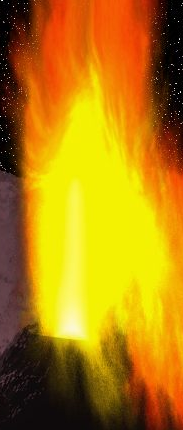
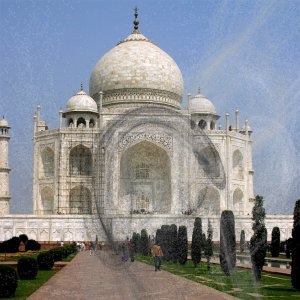
Filter "Flame" applied
With the Flame filter, you can create stunning, randomly generated fractal patterns. You can't control the fractals every bit you lot can with the IFS Fractal filter, but you lot tin can steer the random generator in a sure management, and choose from variations of a theme you like.
![[Warning]](https://docs.gimp.org/en/images/warning.png) | Warning |
|---|---|
| Unfortunately it turned out, that this filter is non working properly for large images. Even more unfortunate is, that its programmer is currently non undertaking whatsoever actions with that plug-in at all, so at that place seems no quick gear up in sight. Although nosotros tin't give you the exact numbers, the plug-in worked in a quick test for a 1024x768 pixel prototype, but didn't do it for a 2500x2500 pixel image. |
![[Note]](https://docs.gimp.org/en/images/note.png) | Notation |
|---|---|
| This plug-in was given to GIMP by Scott Draves in 1997. He also holds the copyright for the plug-in. An descriptive page for the plug-in, provided by the author can be plant in the cyberspace [PLUGIN-FLAMES]. |
14.2.2. Activating the filter
You can notice this filter through → → → .
fourteen.2.3. Options
Figure 17.320."Flame" filter options
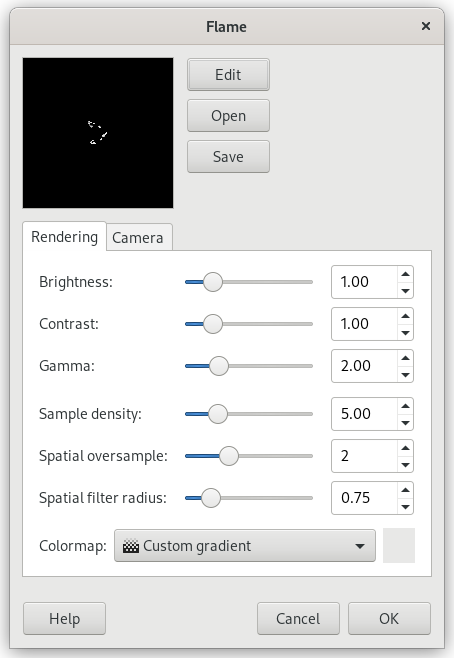
In the primary window, you can set Rendering and Camera parameters. The showtime iii parameters in the Return display are Brightness, Contrast and Gamma. The result of these options is visible in the Preview window, merely it'south more often than not amend to stick to the default values, and correct the rendered image later with Image/Colors.
The other three parameters affect the rendering procedure and don't evidence in the preview window. Sample Density, which controls the resolution of the rendered pattern, is the most of import of these. The Camera parameters allow you to zoom and offset the flame blueprint, until you're happy with what yous see in the preview window. Flame also offers the possibility to shop and load your favorite patterns.
- Edit
-
Pressing this push button brings up the Edit dialog:
Figure 17.321. The Edit Flame dialog
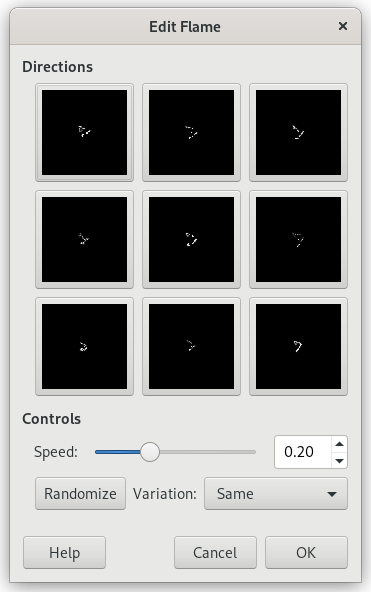
The dialog shows nine different windows. The design displayed in the center is the current design, and the eight windows surrounding it are random variations of that pattern. Clicking on the key image creates eight new variations, which tin be adjusted with the Speed command. You select a variation by clicking on it, and it instantly replaces the epitome in the center. To pick a certain character or theme for the variations, you can choose from nine unlike themes in the Variations menu. You tin can also apply , which replaces the current design with a new random pattern.
- Open up
-
This button brings upwards a file selector that allows you lot to open up a previously saved Flame settings file.
- Salve
-
This push button brings up a file salvage dialog that allows yous to salve the current settings for the plug-in, and so that you tin recreate them later.
Rendering

- Brightness
-
Controls the brightness of the flame object.
- Contrast
-
Controls the contrast between brighter and dimmer parts of the flame.
- Gamma
-
Sets a gamma correction for parts with intermediate brightness.
- Sample density
-
Controls the resolution of the rendered blueprint. (Does not have any issue on the preview.) A high sample density results in soft and smooth rendering (like a spider's spider web), whereas low density rendering resembles spray or particle clouds.
- Spatial oversample
-
What does this practise?
- Spatial filter radius
-
What does this do?
- Colormap
-
This carte gives you several options to set the color blend in the flame pattern:
-
The current gradient as shown in the Toolbox.
-
A number of preset colormaps.
-
The colors from images that are presently open in GIMP.
-
Camera
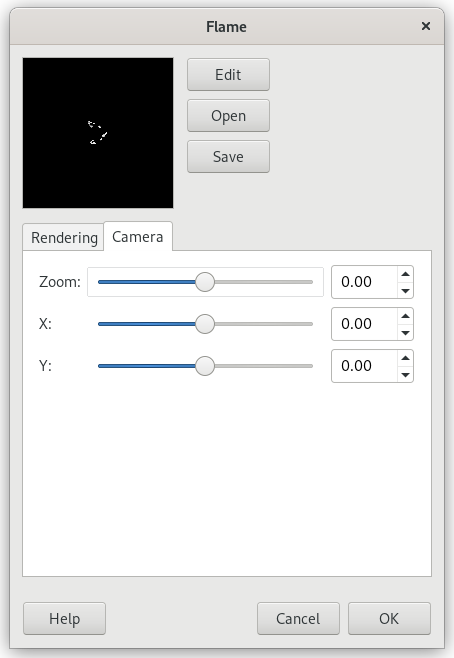
- Zoom
-
Allows yous to zoom the flame in or out.
- 10, Y
-
Allows you lot to move the flame around in the image area.
Source: https://docs.gimp.org/en/plug-in-flame.html
Posted by: pachecotreave.blogspot.com


0 Response to "How To Draw Fire On Gimp"
Post a Comment